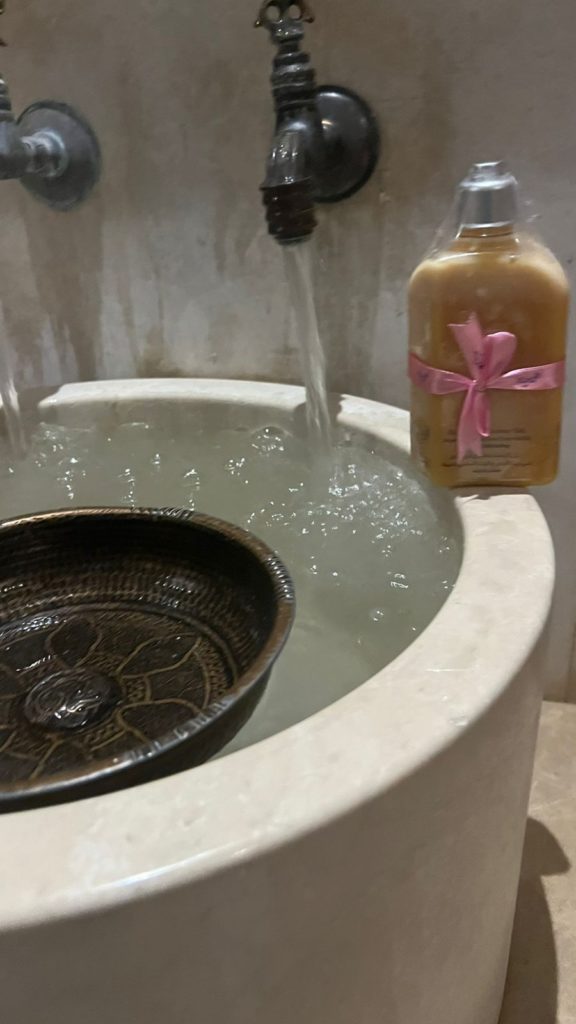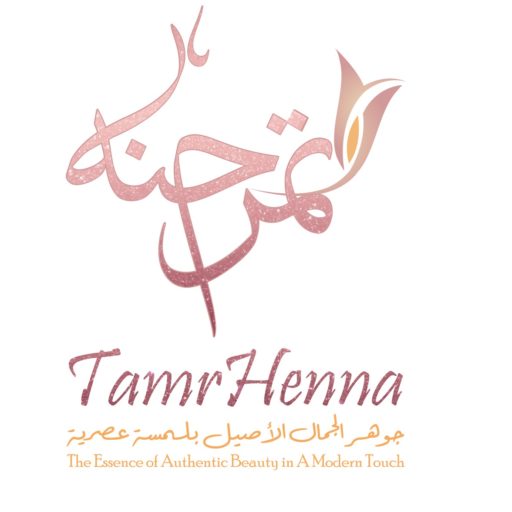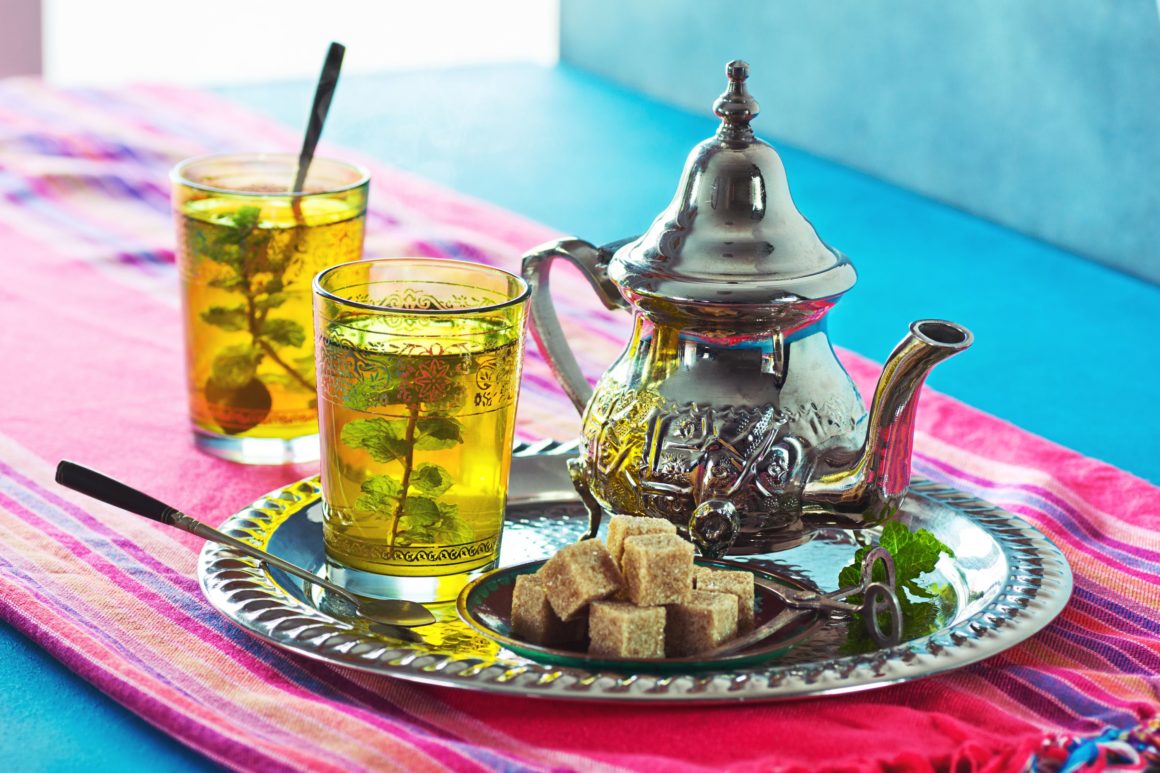Moroccans cannot enjoy joyous moments without the famous Moroccan Tea, often referred to as “Atay” in Morocco.
Let’s imagine that you and your friends spend hours drinking tea, laughing, sharing, gossiping, socializing, or sipping Moroccan mint tea after a relaxing hammam bath – a great way to wind down the ritual!
A Moroccan Tea ceremony is an integral part of Moroccan society and life; it symbolizes friendship, hospitality, and togetherness. It plays an essential role in social relationships. Indeed, beyond its unique taste, drinking tea reflects the rich Moroccan culture, and poets have written about Moroccan Tea in their poetry.
An Overview of Moroccan Tea Traditions
There is no doubt that Moroccan Tea is a well-known and iconic beverage worldwide. However, how it originated is a mystery, and various versions exist. Some attribute the introduction of Tea to Morocco to the Phoenicians in the 12th century, while others say that the first Amazigh tribe imported Tea from Asia. Some sources claim Tea was first presented to Sultan Moulay Ismail by the Queen of England in the 17th century. Some say the sweet nectar was brought to Morocco by Arabs, while others claim Spanish and Portuguese invaders brought it in the early 1900s.
Regardless of the authentic version, we cannot deny that tea is now a fundamental part of Moroccan consumption habits. Tea had become a traditional beverage across Morocco over the 20th century, consumed by Moroccans of all classes.
How is Moroccan Tea Served in Morocco?

Making Moroccan tea is regarded as an art that should be preserved. Serving Tea to the guests in Morocco has another unique tradition, and men often do these preparations to welcome guests or celebrate special occasions.
Moroccan mint tea is usually made and served with a Moroccan tea set which includes a decorative silver tray with three silver containers of tea, mint, and sugar. All of these ingredients are ready to mix in with the hot water. Separately, there is a tray with a traditional teapot and glasses. The teapots are typically silver; some are beautifully engraved but are generally reserved for guests and special occasions.
When serving tea, the server should ensure that the teacup is half full and that white bubbles have formed on the surface. The Moroccan ritual of pouring tea over the top shows respect and appreciation to the guest and creates a bubbly tea.
Ingredients to Make Traditional Moroccan Mint Tea
Tea is not grown in Morocco, so it usually comes from China. Moroccan mint tea is the most popular type of Moroccan Tea and is made from Chinese green tea, known as Moroccan gunpowder tea. The leaves of gunpowder are rolled tightly. Since the tea leaves are compressed, they are stronger than usual tea leaves, and because it resembles old-school gunpowder, it is called gunpowder. Moroccan mint tea can be made with many different ingredients. Still, an authentic version must contain the following essentials: dried green Tea (gunpowder), fresh mint leaves, large pieces of sugar, and boiling water.

In addition to its refreshing, delicious, and sweet taste, Moroccan Mint Tea embodies Morocco’s history, traditions, and culture. Beyond this is a social experience; drinking tea fosters friendship, respect, and togetherness —an opportunity for people to come together and discuss the day’s events.
Inspired by the rich Moroccan tradition and culture, we created products to bring the Authentic Ancestral Moroccan Experience.

Check our product collection for Bath and Moroccan Hammam, and remember to complete your ritual at home with a cup of Moroccan Tea after using our products!https://www.tamrhenna.com/product-list/bath-moroccan-hammam



Leave a Reply